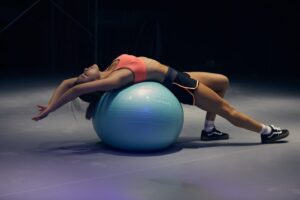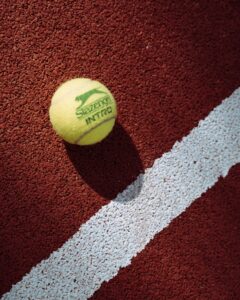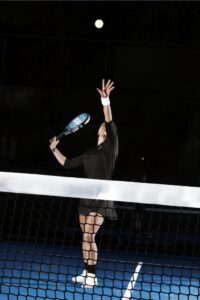The Impact of Conditioning on Padel Performance: A Comprehensive Analysis
3 min read
The Impact of Conditioning on Padel Performance: A Comprehensive Analysis
Introduction
Padel, often referred to as “tennis with walls,” is a fast-paced and exhilarating sport. While technique and strategy play crucial roles, conditioning also plays a significant part in an athlete’s performance on the padel court. In this article, we will explore the fascinating connection between conditioning and padel prowess, and delve into how specific aspects of physical fitness can impact an athlete’s game. So grab your racket, and let’s jump right in!
Understanding Conditioning in Padel
Conditioning refers to an athlete’s overall physical fitness level, encompassing strength, endurance, agility, speed, and flexibility. It involves specific exercises and training routines designed to enhance these attributes and ultimately improve performance. But how does conditioning directly affect padel players?
In a fast-paced sport like padel, rapid movements such as sprinting, jumping, and sliding are common occurrences. Players need great cardiovascular endurance to sustain their energy throughout the game. Proper conditioning helps athletes maintain a high level of intensity and explosiveness, ensuring that they consistently perform at their peak.
Furthermore, conditioning exercises specifically targeting the muscles involved in paddle strokes and lateral movements can significantly enhance an athlete’s efficiency on the court. By developing core stability, upper body strength, and lower body power, players can deliver more forceful shots and move swiftly and smoothly to outmaneuver their opponents.
The Role of Cardiovascular Conditioning
Cardiovascular conditioning, probably the most critical aspect of overall physical fitness for any athlete, is particularly essential in padel. With the constant need for explosive movements, a well-conditioned cardiovascular system ensures sufficient oxygen supply to working muscles and aids in the efficient removal of waste products, such as lactic acid, which can cause fatigue.
Endurance exercises like running, high-intensity interval training (HIIT), and cycling are excellent ways to improve cardiovascular conditioning. These exercises elevate heart rate and train the body to deliver sufficient oxygen to muscles during intense padel rallies. The result is improved stamina, reduced fatigue, and enhanced overall performance.
The Impact of Strength and Power
Strength and power are vital elements for successful padel players. A strong and powerful upper body allows players to generate more force behind their shots, making them harder to return. It also aids in maintaining balance and stability, enabling players to execute accurate shots consistently.
Weightlifting exercises targeting the muscles involved in paddle strokes, such as the shoulders, chest, and forearms, can significantly improve shot quality. Incorporating exercises like bench presses, shoulder presses, and forearm curls into a conditioning routine can enhance players’ ability to deliver powerful and precise shots, ultimately dominating the game.
Agility and Speed: The Need for Quickness
In padel, where split-second reactions and agile movements are necessary, agility and speed are key. Athletes need to be able to change direction rapidly, accelerate quickly, and cover the court efficiently. Agility exercises, such as ladder drills, cone drills, and plyometric exercises, can enhance an athlete’s ability to perform these quick movements on the court.
Moreover, speed training drills, such as shuttle sprints, can help improve reaction time and explosive speed, allowing players to respond swiftly to their opponents’ shots. The faster an athlete can move, the better they can reposition themselves and get into a favorable position to execute their shots effectively.
The Importance of Flexibility
Flexibility is often overlooked but holds immense importance in padel. Being able to move freely without restrictions allows for a wider range of motion, enabling players to perform various shots more effectively. It also reduces the risk of injuries, as flexibility aids in absorbing impact and prevents muscle strains.
Dynamic stretching exercises, like lunges and leg swings, can improve flexibility in the lower body, while exercises targeting the upper body, such as shoulder stretches, can enhance reach and stroke efficiency. Regular stretching routines before and after playing padel help maintain optimal flexibility and further prevent injuries.
Conclusion
Conditioning plays an integral role in an athlete’s performance in padel. Whether it is cardiovascular endurance, upper body strength, agility, or flexibility, each component contributes to an athlete’s overall prowess on the court. By dedicating time and effort to conditioning exercises that target these aspects, athletes can refine their skills and excel in the exciting game of padel. So, embrace the challenge, focus on your conditioning, and let the court be your arena to showcase the profound impact of physical fitness on your padel performance!







